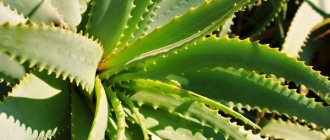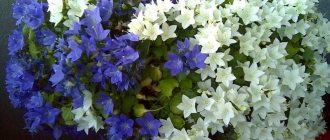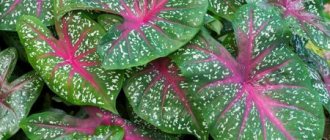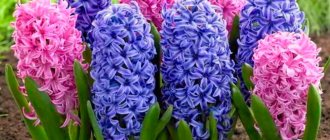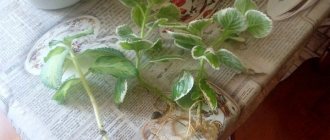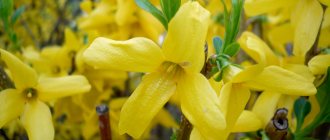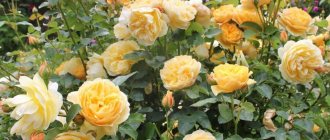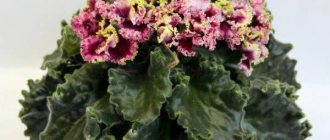The main difference from other amaryllis is the continuation of growth in winter. The white-flowered species and hybrids derived from it are most often grown in greenhouses and indoors. Most hemanthuses are modest in appearance, not fussy when caring for them at home, and are suitable for beginning gardeners.
Botanical description
Hemanthuses are perennial bulbous plants, have a decorative appearance, and are divided into evergreen and deciduous. The bulbs have an egg or pear shape, and the part located above the ground has a green tint. The roots are long and thick.
There are no more than six juicy, fleshy, thick leaves, belt-shaped. They grow from bulbs or on short cuttings . Smooth, shiny plates, drooping or erect, colors from pale gray to dark green. There are species with pubescent foliage, wavy edges, and yellowish spots.
Peduncles are strong, powerful, and may appear before the foliage has grown. The flowers are small, grouped in spherical umbrella-shaped inflorescences, the colors of the petals are white, pink, red.
The stamen is unusually long. The inflorescences are surrounded by bracts, the colors are the same as the petals.
During flowering, hemanthuses emit an unpleasant but weak aroma.
These plants are self-pollinating . The ball-shaped fruits look like fleshy berries. Colors pink, orange, red. Black achenes are small and lose their viability very quickly.
brindle
Tiger is distinguished by short peduncles and long leaves, dotted near the very base with spots of brownish shades. The inflorescence is large and very beautiful, surrounded by five or six large and sleepy perianths of red shades. The flowers themselves in inflorescences are red-pink in color, the stamens are dark yellow.
A neat, delicate flower on a squat peduncle looks great.
Hemanthus Tiger
Varieties and photos
Hybrid varieties are grown indoors (on window sills, in flower pots, in floor vases), which differ from each other in the appearance of the foliage and the color of the petals. Below are photos, names and descriptions of hemanthus varieties suitable for propagation and care at home:
White-flowered
Most hybrids are bred from this species.
The glossy leaves are fleshy, smooth, dark, with fine pubescence along the edges of the plates. Peduncles are long (up to 25 cm), thick. Fluffy white flowers bloom in autumn and continue to bloom in winter.
Hybrids bred from white-flowered hemanthus:
- Prince Albert - the inflorescences are large, the petals have an orange tint;
- Hemanthus is pure white - the foliage is fluffy below, red bracts with pubescence, white flowers, yellow stamens, flowering begins in spring and lasts 3 months.
In the photo below is the Hemanthus White-flowered variety:
Garnet
This variety is also bred from the white-flowered species. The bulb is round, fleshy, the wavy foliage is long (up to 30 cm). The flower stalks grow up to 40 cm, the bracts are green (sometimes burgundy), and the petals have a red or ruby hue. Flowers bloom in summer, flowering ends in autumn.
Sharlakovy
This plant has an unusual appearance. The length of the bright green leaves reaches half a meter. The peduncle is powerful, speckled. Flowers with yellow stamens, red petals and bracts. Blooms in September, but not every year. The flowering period is short. This variety is the most capricious to care for . You can see what the Hemanthus Sharlakhovy variety looks like in the photo below:
brindle
This hybrid was given its name because of its spotting. There are brown spots on the leaf blades and fringe along the edges. The length of the foliage is up to 45 cm, the peduncle is up to 15 cm. The inflorescences are large, with red-blue bracts, the petals are also red-blue, with yellow, very bright stars.
Multifloral
This hybrid was bred for growing in gardens. The green foliage is covered with a large number of veins. The peduncle can grow up to 80 cm, the color is green or red with spots. Petals are pink, crimson, red. This hemanthus is classified as a separate genus Scadoxus. The photo below shows Hemanthus Multiflorum:
Katarina
This species, otherwise called the blood lily, bred for indoor cultivation , is a subspecies of the multifloral hemanthus. The bulb is large, the narrow foliage is long (up to 30 cm), thin. The peduncle arrow grows up to 30 cm and is covered with spots. The petals of the flowers are red, bright, and bloom in August.
Types of hemanthus
There are a huge number of varieties of this plant, discovered by scientists at different times. Here are the most famous:
- Hemanthus white-flowered
. It can be found more often than others in houses and apartments. Its fluffy white pom-pom is covered with many golden stars, making it look like a giant stamen. Hemanthus can fire up to 10 or more arrows at the same time. - Hemanthus pomegranate
. Its inflorescences resemble a large dandelion that for some reason turned red. These balls reach 10 cm in diameter. The leaves are leathery and wavy. - Hemanthus Katarina
. It has longer and thinner leaves surrounding a fifteen-centimeter stem, which is crowned with truly gigantic red inflorescences.
Care
All hemanthuses have an easy-going “character”. Care is almost the same as for succulents. Problems rarely arise, which pleases novice gardeners.
Lighting
Gemanthus feels great both in the sun and in partial shade. Loves is located near windows in the east, northeast, west. When placed on the south side, shading from sunlight is required.
Temperature
All varieties feel great at the same temperature as people: +18-22°C. If the flower is evergreen, there is no dormant period, and there is no need to change the conditions in winter. Deciduous varieties move to a place with a temperature of +10-12°C.
In the summer, any hemanthus can be taken out of the premises if it is protected from drafts.
Humidity and watering
At home, watering is required when the top layer of soil dries out. The water must be drained from the tray. Do not allow excess moisture , as the bulbs may rot. For irrigation, filtered or melt water is used, room temperature.
Watering of deciduous varieties is reduced before the dormant period, then completely stopped, and resumed after the appearance of the first peduncle. Evergreen species require less moisture in winter.
Hemanthus do not need to increase humidity by spraying. A shower is arranged monthly to remove dust. Can be replaced by wiping with a damp cloth.
Top dressing
For feeding, you can only use mineral complexes with phosphorus and potassium, which are produced for bulbous plants. Fertilizers are required from the beginning of growth to the beginning of flowering , once every 2-3 weeks. During dormancy, no feeding is required.
How to replant?
Hemanthuses can not be replanted for 4-5 years. During transplantation, the baby bulbs are separated. The best time to do this work is the beginning of March (rooting is difficult earlier or later). The bulb is buried about a third.
The decorative effect is enhanced if there are several bulbs in one container.
Priming
Hemanthus love a well-drained, rich, slightly acidic soil mixture. It is best to drink substar for bulbous plants. The soil itself is most often prepared from humus (crushed bark) and sand (perlite). You can add a little peat and bone meal.
Pot
The diameter of a shallow pot is from 25 cm, large drainage holes, a layer of expanded clay at the bottom. It is important that there is no distance of more than 3-4 cm from the bulbs to the walls. If the container is too deep, the roots will grow and the soil mixture will turn sour.
Trimming
Hemanthus does not require constant pruning.
Dry and damaged foliage is periodically removed, and flower stalks are cut out after flowering. It is necessary to ensure that after the procedure no plant residues remain on the ground. They can harbor pests or microorganisms that cause disease.
Reproduction
There are three ways to propagate hemanthus at home: leaf cuttings, seeds, baby bulbs.
Leaf cuttings
In an adult plant, during active growth, the old lower leaf, which has a fleshy base, is cut off. Part of the plate is removed, the cut is treated with fungicide or coal powder , and dried for a day. To form a bulb, you can use a mixture of sand and peat, vermiculite, and water. The leaf is placed in this medium, the container is placed in a warm place, and watered moderately. The roots appear in 10-14 days.
Young hemanthus is planted in the soil mixture for an adult plant. It will begin to bloom in 3-4 years.
Seeds
Due to the rapid loss of germination (in 1-2 months), this method is rarely used for home cultivation. However, if the achenes are collected on time and sown immediately after opening the fruit, new plants will bloom in 5-6 years.
For sowing, permanent pots are selected (diameter 9-10 cm, depth 12 cm) with drainage holes.
Hemanthus do not need picking ; they do not tolerate transplantation well.
The soil mixture is prepared from equal parts of sand and vermiculite, you can add a little humus. The seeds are placed on the surface (you can’t dig them in, you can press them down a little), the containers are covered with film. After germination, abundant watering and heating with phytolamps are required for up to one and a half years.
Children
This method is the easiest. When transplanting, the children with leaves and roots are separated from the large bulb and planted as adult hemanthuses. They take root quickly and bloom in 3-4 years.
Hemanthus transplant
The flower needs it as the soil depletes. The hemanthus plant is replanted once a year, but this only applies to young seedlings that are gaining strength and actively growing. As it reaches maturity, it can be replanted less and less often. As a rule, this is done only to separate the “children”. The best time for such work is early spring, when the growing season begins. There is a good chance that the plant will easily survive such intervention and quickly take root in the new substrate.
Hemanthus – pot
This plant does not need a large and spacious pot. The elephant ear flower feels great in low and wide containers. There is only one requirement - that the bulb fits completely in it, the roots straighten out, and a drainage layer 2-3 cm thick remains free underneath. Hemanthus is an indoor plant that is sensitive to the material of the pot. In a plastic substrate, the substrate may periodically turn sour, requiring replacement of the top layer, but in a clay one, the flower feels much better due to high-quality air exchange.
Hemanthus - soil
The soil should be light and nutritious, well permeable to moisture and maintaining high-quality air exchange. This is easy to find in any specialty store, or you can make it yourself. Here are two suitable options for hemanthus:
- Sod, garden soil, peat and fine river sand in a ratio of 2:1:1:1.
- Sod, garden soil, humus and fine gravel in a ratio of 2:1:1:1.
This is the kind of hemanthus soil that will appreciate. However, if an amateur comes across a succulent, then the requirements will be different. It is recommended to purchase a potting mix specifically for these drought-tolerant varieties. It is enriched with high-moor and low-lying peat, vermicompost, all kinds of leavening agents - fine expanded clay, sand and others.
Diseases, pests
Hemanthuses rarely get sick; the cause is most often improper care. The bulb rots if it becomes infected with one of the fungal diseases, with too frequent or excessive watering. For the same reasons, the foliage of the flower may turn yellow.
If placed in a south-facing position without shade, red scorch may damage the foliage. Staganosporosis looks like a burn, manifests itself as orange-red stripes and spots on the leaves. The diseased parts are removed, the plant is sprayed with Bordeaux mixture (copper sulfate). At the same time, it is advisable to evaluate the watering regime (whether there is too much moisture).
Among the insects, hemanthuses are attacked by scale insects and spider mites in hot weather. The first can be found in the axils of leaves. You need to make a soap solution, wet a cotton swab and remove insects, rinse the plant in the shower. Spider mite infestation is indicated by cobwebs and bites on the foliage. You can get rid of these pests using fitoverm or actellik.
If the hemanthus withers, you need to look for white insects (amaryllis scalebugs) in the soil mixture. The bulbs cannot be cured; they must be destroyed.
At high temperatures and humidity there is a risk of anthractic infection. The disease is indicated by spots on the foliage and dark brown streaks. Diseased leaves must be removed and the plant treated with a systemic fungicide. It is important to reduce watering and ventilate the room more often.
If the flower grows slowly, the foliage has a silvery tint. It is infested with thrips. Any insecticide helps.
Garnet
Hemanthus Garnet is very cute and has a beautiful appearance. Its peculiarity is its gorgeous, incredibly lush red-yellow flowers with an orange tint. Sometimes their color can have garnet shades. The bulb is large, about eight to nine centimeters in diameter. The leaves are dark green and long, with an elongated wavy shape from fifteen to thirty centimeters.
Flowers - long pistils collected in a huge and lush bunch, among orange-scarlet petals, shorter but fluffy. The perianths range from dark purple to dark green. Blooms from mid-summer to late autumn.
Hemanthus Garnet
Signs and superstitions
Regardless of the variety, hemanthuses are poisonous. Licorine, along with other alkaloids, contains bulbs and foliage, so they need to be placed in places inaccessible to pets and small children. When cleaning, you must wear gloves and wash your hands thoroughly after finishing work.
There is one sign about these flowers: they help replenish the family budget.
Whatever the signs, most hemanthus are grown at home all over the world, caring for them is not difficult. You should not throw away a flower because of superstition. When choosing, it is important to take into account your own attitude towards a particular plant. Those you like will become friends and help you in difficult times.
Why doesn't hemanthus bloom?
Some lovers are puzzled why hemanthus does not bloom. The reasons can be very different, from non-compliance with growing conditions to the lack of a rest period. It is necessary to find out whether this particular species needs it and, if so, provide it. That is, remove the plant for the winter in a cool, dark place where the air temperature does not exceed +15°C. Watering should be reduced to a minimum. With the arrival of spring, you can grow hemanthus at home, returning it to its usual place by the window.
Photo gallery
Multifloral
Multiflowered is a rather large specimen: the bulb is about eight centimeters. Its rich green leaves have noticeable longitudinal patterned veins. The leaf blades are short and leathery to the touch and have a short petiole.
The peduncle is colored in a dark emerald or dark brown shade and can reach eighty centimeters in length. The umbellate inflorescence consists of noticeable individual flowers, of which there can be up to hundreds.
Hemanthus Multiflora
Problems when growing a flower and their causes - table
| Problems | Causes | What to do |
| Leaves lighten and stretch out | Not enough light | Move the plant to a more illuminated place, but not in direct sunlight. |
| Light coating on leaves | Hard water | For irrigation it is necessary to use soft, settled water. |
| Yellow and dull leaves | Excessive lighting, plant exposure to direct sun | Rearrange the plant, shade it from direct rays. |
| Rotting of the bulb and roots | Excess water | Try to replant the hemanthus, although it is difficult to save the plant if it rots |
| Shchitovka | Small insects that look like dark plaques on leaves. They suck the juices out of the plant, causing the leaves to dry out. |
|
| Spider mite | The visible trace of a mite's life is the web on the leaves. Brown spots appear on the plant, the leaves turn yellow and dry out. |
|
Reviews from flower growers
The year I planted it, the hemanthus did not bloom. I got scared in October, when the leaves began to quickly turn yellow, but it turns out that this is how it should be. I began to water the plant more sparingly, and when the leaves completely withered, I cut them off and put the pot under the bath. The main thing is not to forget it there; the ground should be slightly damp even in winter. In January the plant needs to be awakened, I increased the watering, in March I put the pot in a bright place and started feeding it, and then again in a circle. This is the difficulty: water it in time, put it in the light, then reduce watering in time and remove it. In summer, the temperature should not be lower than 16 °C, in winter - no higher than 10 °C. This plant loves order. If you follow it, the flower is not capricious, it will definitely reward you with flowering in July - August. Well, for those who can go on vacation and leave hemanthus to the mercy of fate, it is better not to get this plant.
Sources
- https://countryhouse.pro/gemantus-uhod-za-tsvetkom-v-domashnih-usloviyah/
- https://1pocvetam.ru/komnatnye-rasteniya/gemantus-yhod-virashivanie.html
- https://MrDachnik.com/gemantus
- https://dacha.help/cvety/gemantus-uhod-v-domashnih-usloviyah
- https://dom-florista.ru/rasteniya/dekorativnocvetushhie/gemantus/uhod-za-gemantusom.html
- https://ProZvety.ru/katalog-rastenij/krasivotsvetushhie/gemantus-foto
- https://floristics.info/ru/stati/5048-gemantus-v-domashnikh-usloviyakh-ukhod-i-foto.html
- https://zelenypodokonnik.ru/amarillisovye/257-gemantus
- https://selo.guru/rastenievodstvo/lucovichnye/gemantus.html
- https://tsvetem.ru/tsveti_v_dome/gemantus.html
- https://pocvetam.ru/sad/cvetok-gemantus-uxod-v-domashnix-usloviyax.html
- https://tutknow.ru/garden_and_orchard/7225-gemantus-ili-hemantus-vyraschivanie-i-razmnozhenie-v-pomeschenii.html
[collapse]
Watering
Watering hemanthus should be approached with special attention and caution, since when the soil is waterlogged, its root system easily rots.
Water the plant with purified water at room temperature, and do this only after the soil has dried at least half.
The average number of waterings is:
- in summer - once every 3-4 days;
- in winter - once a month.
The moisture remaining in the pan is immediately drained and the condition of the soil mixture is regularly checked.
